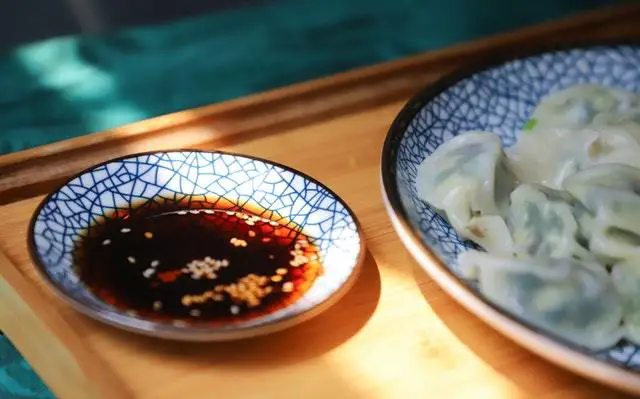
Coconut aminos is a savory seasoning sauce that is made from the aged sap of coconut palm and is a great alternative to soy sauce.
The pursuit of a low sodium diet is certainly nothing new. However, I am always looking for ways to make it easier for my clients to follow this diet. This is why I do extensive research into foods like coconut aminos to see if it is a good substitute for sodium-heavy foods like soy sauce.
In this post, I will outline what it is, how it was made, and breakdown the nutrient profile of coconut aminos. I also compare it to other commonly used ingredients and give you some idea of how to use it in your own food.
Learn about all this and more!
Table of Contents
First off, let’s get to the bottom of what coconut aminos actually is.
Well, it is a savory seasoning sauce.
It is currently being advertised as a healthy alternative to soy sauce.
Let’s see how this statement holds up…

Now, despite its name, coconut aminos doesn’t taste like coconut at all.
In fact, there isn’t even a hint of coconut in it.
Instead, it has a salty, umami flavor to it, along with some notes of sweetness.
Some compare the taste to that of light soy sauce.
Coconut aminos does have a lighter and sweeter taste than traditional soy sauce, however.
It should be noted that the nutritional content of coconut aminos can vary from one brand to another.
The exact ingredients, ratios, and processing methods used will alter the numbers.
However, here is an idea of what the nutritional facts per tablespoon are like for this seasoning are like:
Now, it is quite possible that you will have heard of all the miraculous health benefits of coconut aminos.
So, just how much of this is true and how much is pure marketing?
Well, unfortunately, most of this is simply conjecture.
For one thing, the seasoning doesn’t contain a significant number of nutrients.
As such, it is unlikely to have a noticeable impact on your health.
For another, most of the reported benefits of coconut aminos is actually based on other coconut-derived products.
There is no evidence to prove that coconut aminos could improve your health.
The one thing that can be said for this seasoning, however.
The level of sodium in coconut aminos is lower than many other seasonings.
As such, it is possible to use it as a substitute, particularly if it shares a similar flavor profile.
Nevertheless, beware that coconut aminos isn’t a low sodium food at all.
Due to this, it should be consumed in moderation.
Let’s take a look at just how you can use this seasoning in your food:

As mentioned, you can use coconut aminos as a substitute for several seasonings.
So, let’s take a look at what it can be used instead of.
Coconut aminos is most commonly used as a substitute for soy sauce.
This is largely due to the lower sodium content.
A single teaspoon of soy sauce contains around 280mg of sodium.
Coconut aminos, on the other hand, contains around 90mg.
There is also the fact that soy is a rather widespread allergen.
Thus, coconut aminos is a good choice for anyone who is cutting soy out of their diet as well.
Although they may sound similar, these two ingredients are worlds apart.
For one thing, liquid aminos is made from soybeans.
For another, it contains a significant amount of sodium – about 320mg per teaspoon.
This alone means that coconut aminos is the superior choice.
Then, there is tamari, another popular soy sauce substitute.
Once again, tamari is made from soybeans.
As such, it can’t be consumed with people who are allergic or sensitive to soy.
Also, a single teaspoon contains about 300mg of sodium.
Coconut aminos is the clear winner here as well.

Before using coconut aminos as a substitute, taste test it first.
This is because every individual has a different opinion on the flavor profile.
For some, it is a perfect alternative for soy sauce.
Others, though, find it to be a bit too sweet.
Once you have tested it out, you can determine where you stand.
Also, once you gain a better understanding of the flavor, you will be better equipped to use it as you see fit.
You can then simply use it in any dish that will complemented by its specific flavor profile.
At the moment, coconut aminos is still a bit of a niche ingredient.
Thus, it may not be easy to get your hands on it.
You could try to pick some up at health food stores, however.
Those that cater to paleo diets, in particular, may have it stocked up.
Otherwise, you will need to look online to find a suitable brand.
Related Reading
The Best Coconut Aminos to Add to Your Cooking
Remember to always check on the brand that you wish to purchase.
Make sure that it is well-reputed.
You should also go through the ingredient list and examine the nutrient facts as well.
This is especially important if you are trying to cut down on your sodium content.
You need to be absolutely certain that the coconut aminos that you are selecting has a lower sodium content than soy sauce and other seasonings.
Coconut aminos is made from the aged sap of coconut palm.
Then, water and salt are mixed in, producing coconut aminos.
This is still a relatively new product in Western markets and, as such, not much is known about it.
Related Reading
What Is Coconut Nectar and How to Use it as a Substitute for Sugar?
The Low Carb Deep Dive: Is Coconut Sugar Keto?
So, there you have it – everything that you need to know about coconut aminos. It is a fascinating ingredient.
And, now that you are all caught up on it, you can be certain of how to use it in your food.
If you enjoyed this post, head over to our Pinterest page. It has plenty of other posts on how you can use different coconut products for cooking and baking.
